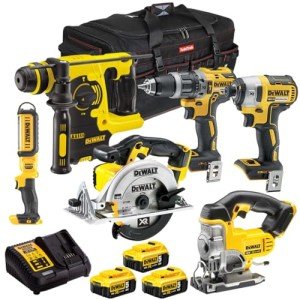
Best Power Tool Set
Add a review FollowOverview
-
Founded Date 10/18/2004
-
Posted Jobs 0
-
Viewed 6
Company Description
10 Apps That Can Help You Manage Your Build Your Own Tool Kit

Build Your Own Tool Kit: A Comprehensive Guide
Building your own tool kit is an important endeavor for any DIY lover, homeowner, or hobbyist. Having an efficient and extensive tool kit not only allows you to deal with numerous tasks effectively but also saves you time and cash in the long run. This guide will check out how to build your own tool kit, what tools to include, and answer some frequently asked concerns.
Why Build Your Own Tool Kit?
Producing your own tool kit offers numerous benefits:
- Personalization: You can tailor your toolkit to fulfill your specific needs and projects.
- Quality assurance: You can select the tools based on personal preference for quality and toughness.
- Expense Effectiveness: You can prevent acquiring unnecessary tools and concentrate on what you need.
- Learning Experience: Building your own toolkit is an instructional experience that improves your understanding of your tools.
Necessary Tools for Your Tool Kit
Producing a tool kit can appear difficult, particularly with the variety of tools readily available. Below is a categorized list of important tools, from hand tools to power tools, to assist you get started:
| Category | Tools | Function |
|---|---|---|
| Hand Tools | Screwdrivers (various sizes) | Tightening and loosening screws |
| Hammers (claw and rubber) | Driving and getting rid of nails | |
| Pliers (needle-nose, slip-joint) | Gripping, twisting, and cutting | |
| Wrenches (adjustable and socket) | Tightening or loosening up bolts | |
| Measuring tape | Determining length | |
| Cutting Tools | Utility Knife | Cutting different materials |
| Handsaw | Cutting wood | |
| Power Tools | Cordless Drill | Drilling holes and driving screws |
| Circular Saw | Cutting big sheets of product | |
| Fasteners | Nails, Screws, and Anchors | Securing materials |
| Wood Glue | Bonding wood pieces together | |
| Safety Gear | Shatterproof glass | Securing eyes |
| Work Gloves | Protecting hands | |
| Ear Protection | Lowering noise exposure | |
| Organizational | Tool Box or Bag | Keeping tools organized |
| Identifying Supplies | Easy recognition of tools |
Creating Your Tool Kit: Step-by-Step
-
Identify Your Needs: Determine what tasks you prepare to carry out. Different tasks require various tools. For example, if you’re mostly working with wood, concentrate on wood-cutting tools.
-
Budget Planning: Decide just how much you want to invest in your tools. Purchasing quality tools is important, as they can last a life time.
-
Purchase Tools Gradually: Start with the most necessary tools and gradually include more specific tools as needed.
-
Organization: Invest in a sturdy toolbox or organizer. Keep often used tools quickly accessible while storing others securely.
-
Upkeep: Powertoolsonline.uk Regularly clean and maintain your tools to extend their life-span and guarantee they carry out well.
Benefits of Different Tool Types
| Tool Type | Benefits | Downsides |
|---|---|---|
| Hand Tools | No need for electrical power, portable, accurate | Can be labor-intensive |
| Power Tools | Save time and effort, increase precision | Needs electricity, much heavier |
| Cutting Tools | Flexible and efficient for various products | Requires appropriate handling and maintenance |
FREQUENTLY ASKED QUESTION: Building Your Own Tool Kit
1. What is the minimum number of tools I need to start with?
A standard toolkit can start with just 5-10 important hand tools (e.g., a hammer, screwdrivers, pliers, a measuring tape, and an utility knife) depending on your requirements.
2. How do I pick the right tools?
Think about the types of jobs you will carry out. Research the tools used for those jobs and examine the quality and brand name dependability.
3. Should I purchase new or utilized tools?
Both options have benefit. New tools typically come with service warranties, while utilized tools can be more cost-effective. Make sure utilized tools are in excellent condition and working well.
4. How should I maintain my tools?
Keep them tidy, save them appropriately, and inspect routinely for any required repairs or replacements. Oiling and honing cutting tools will likewise improve their performance.
5. Can I produce a tool kit on a budget plan?
Yes! Try to find affordable tools, store throughout sales, or consider second-hand choices. Focus on the most required tools initially.
Final Thoughts
Building your own tool kit is not only a practical investment however also a satisfying experience that improves your skills. It enables people to take on projects with self-confidence and efficiency. By thoroughly choosing a combination of hand tools, powered tools, cutting tools, safety gear, and organizational supplies, anyone can create a customized tool kit that satisfies their distinct requirements.
With a well-rounded tool kit in hand, individuals can open their imagination and see their ideas come to life, project by task. Delighted structure!
